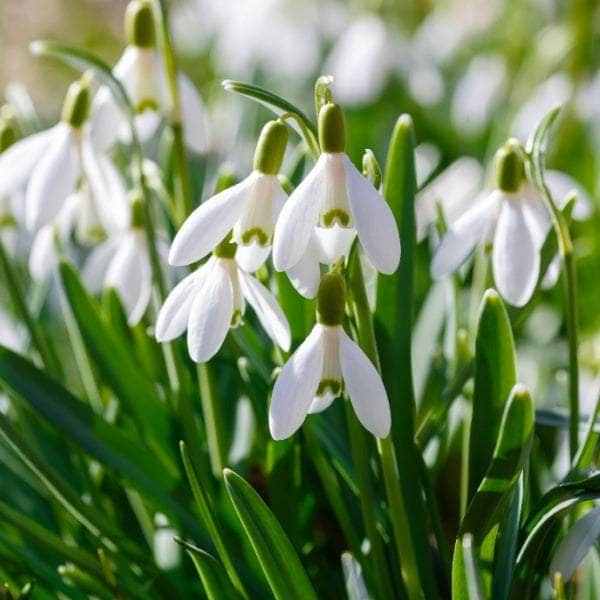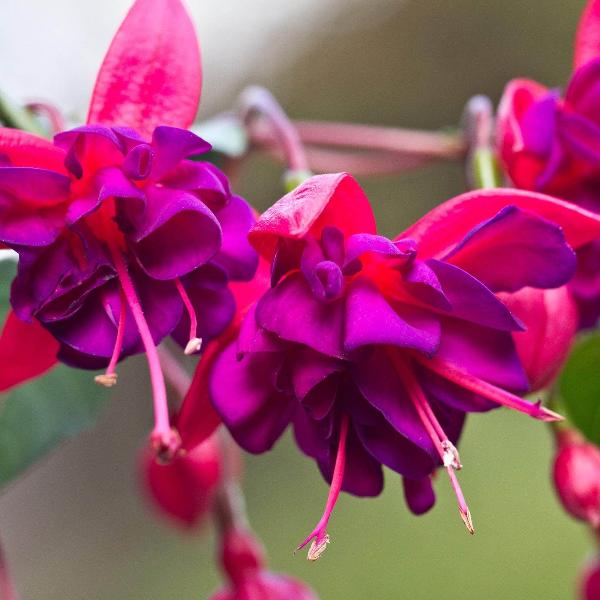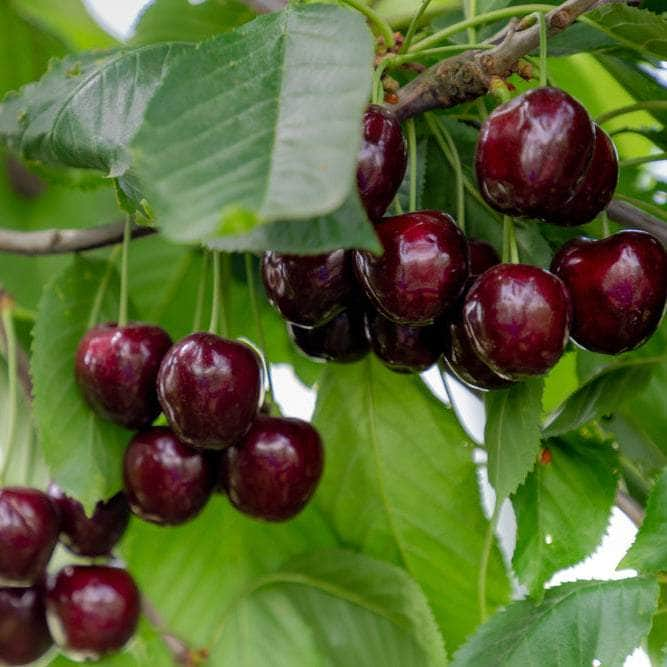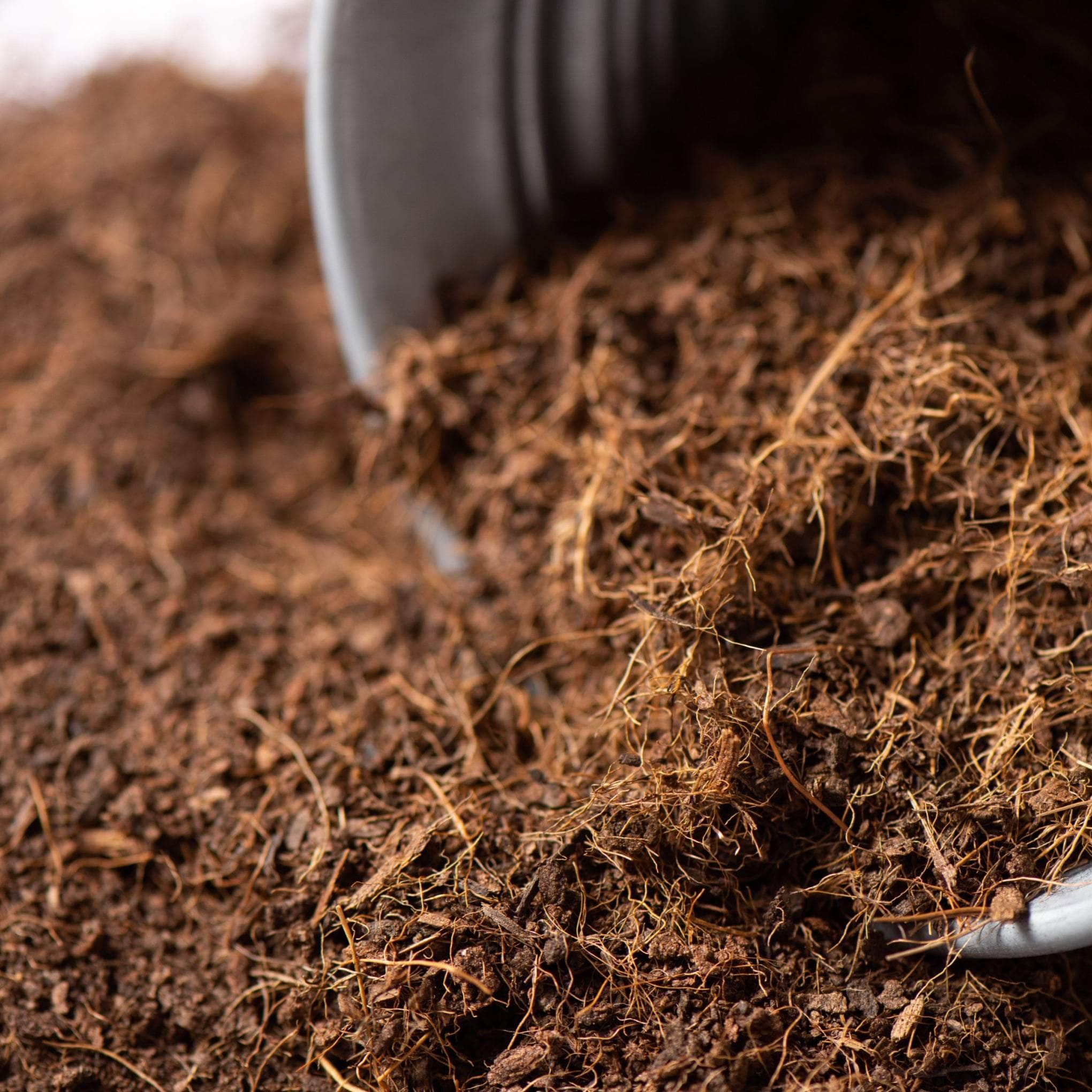The Ultimate Guide to Growing Sweet William Plants
Welcome to our ultimate guide to growing Sweet William plants, a treasure trove of gardening advice for both novice and seasoned gardeners. Sweet William, a vibrant cut flower, is a favourite amongst garden enthusiasts for its stunning pink, purple, and red blooms. This guide will take you through the journey of growing these beauties, nurturing them in their first year, and ensuring they thrive under the right grow conditions.
We'll delve into the characteristics for identification, the ideal soil type, and how to manage common pests and diseases.
We'll also explore how to encourage more blooms and the best ways to use Sweet William as a cut flower. Whether you're planting in full sun or partial shade, in a small pot or a large garden, this guide has got you covered.
So, if you're ready to transform your garden with these stunning blooms, read on. This is your one-stop-shop for all things Sweet William, from the danger of frost to the joy of early summer blooms.
Let's get started on your gardening journey.
Understanding Sweet William: An Overview

Sweet William, a classic garden favourite, is a plant that's as charming as its name suggests. This section will provide an overview of this delightful plant, from its unique characteristics to the different types available. Whether you're a seasoned gardener or a novice, understanding Sweet William is the first step towards successful sweet william care.
This plant, known for its vibrant colours and sweet fragrance, is a popular choice for many gardeners. It's not just its beauty that makes it a favourite, but also its ability to attract pollinators, making it an excellent addition to any garden.
What is Sweet William?
Sweet William, scientifically termed as Dianthus barbatus, originates from a lineage of perennial or biennial herbaceous plant species, frequently opting to strut its captivating blossoms as an annual. Taking its sweet time to flourish, this stunning flora will gracefully mature to a stature close to 2 feet.
A frequented rendezvous for pollinators like bees, butterflies and hummingbirds, the plant emits a considerable allure with its radiant blooms and pointy green leaves. Though its charm is ample, one ought to protect pets and humans from ingesting it as the foliage exudes mild toxicity.
Revered for its resilience amidst light frosts, Sweet Williams plants are lauded for their cold-hardiness. With enrichment through sufficient sunlight exposure and well-drained soil, the plant nurtures into a spectacle, provided there is a considerate degree of irrigation and shade especially in scorching weather to inhibit oversaturation and dormancy.
Characteristics of Sweet William
Characteristic for Identification: Sweet William (Dianthus barbatus) is an herbaceous perennial that typically exhibits a vibrant array of colours including pinks, reds, purples, whites, and bi-colours. It features pointed green leaves and dense clusters of fringed, bearded petals, earning it an alternative nickname of 'bearded pink'.
Height and Growth: This plant is slow-growing reaching its ultimate height of about 2 feet. It is generally easy to grow, thriving in full sun and requiring regular but not over-saturating watering.
A Plant for Pollinators: Sweet William is a favourite among pollinators, attracting butterflies, bees, and hummingbirds with its vibrant colours and sweet fragrance.
Types of Sweet William
Bi-Coloured Sweet William: This variety flaunts petals in two distinct shades, producing a vibrant display. It's a great plant for pollinators, attracting bees, and butterflies with its colourful appeal.
Fragrant Sweet William: Exuding a sweet, peppery perfume, this cultivar enhances any garden with its scent. Yet, it’s not only a treat for the nose but also the eyes, boasting dense clusters of flowers in complementary colours.
Scentless Sweet William: For those who prefer their gardens to be visually striking over anything else, the scentless variety offers a beautiful display without the fragrance. Like its fragrant counterpart, it produces a stunning mix of colours from reds to purples.
Bearded Sweet William (also known as 'Bearded Pink'): This type stands out with its unique fringed and bearded petals, providing an extra dimension to your plant collection.
Annual or Biennial Sweet William: Typically, Sweet William is a short-lived perennial that is often grown as an annual or a biennial. This means you may only get one glorious flowering season, but what a season it is!
Get to know these types, consider their characteristics for identification, and bring your garden to life with the Sweet William variety that suits your taste. The ultimate height of these plants varies but generally, they will reach about two feet, making them a perfect addition to any garden size.
Caring for Your Sweet William Plants

Caring for your Sweet William plants is a rewarding task that requires a blend of the right conditions and timely maintenance. These vibrant flowers, with their rich hues and delightful fragrance, are a joy to cultivate. However, they do need a bit of attention to truly thrive. From providing the ideal conditions to regular watering, fertilising, and pruning, each step plays a crucial role in your Sweet William care routine. Let's delve into the specifics of nurturing these charming blooms.
Ideal Growing Conditions for Sweet William
Sweet William, or Dianthus barbatus, as it's often known, is incredibly adaptable. It is hearty, resilient and can tolerate a variety of soil conditions, making it ideal for various garden settings. One key consideration is that Sweet William prefers a well-drained, fertile and loamy site. Overly wet, or heavy soils, on the other hand, can prove detrimental to these plants.
A remarkable attribute of Sweet William is its relative indifference to soil pH levels. It can survive in both acidic and alkaline soils. Ideally, however, a neutral to slightly alkaline soil environment tends to encourage the most optimal growth. To achieve this environment, some gardeners recommend adding a touch of lime to the soil prior to planting.
Regarding sun exposure, Sweet William relishes full sun. Yet, it is equally important to note that in hot regions, partial afternoon shade is recommended to prolong the plant's bloom period. Too much shade, however, can culminate in frail, limping plants. Achieving the right balance between full sun and partial shade is therefore vital to effective Sweet William care.
Watering and Fertilising Your Sweet William
As cultivators of Sweet William, paying attention to the watering and fertilising of the plant is crucial. The plant thrives when it receives regular watering, particularly when it is establishing itself or if it is grown in a container. However, beware of overwatering, as standing water can rapidly harm these plants.
Regarding fertilisation, Sweet Williams are fairly low-maintenance. These plants are troopers and can hold their own, even in nutrient-poor soils. Nonetheless, adding a layer of mulch after establishment can conserve moisture and deter weed growth, thus giving Sweet William a competitive edge.
Pruning and Deadheading Sweet William
To get the most out of your Sweet William, pruning and deadheading is key. Scrutinising your plants for flowers past their prime can encourage branching and subsequently more flowers. It's recommended to perform this activity during late winter or early spring when the plant is least active.
Suppose your Sweet William plant looks overly bushy or unkempt. In that case, a trim at the stem tips can aid in promoting a more uniform and appealing look while improving air circulation through the plant. Make your cuts just above the leaf nodes as this is where new growth will spring from.
Common Problems with Sweet William Plants

Growing Sweet William plants can be a rewarding experience, but like any other plant, they are not immune to problems. Despite their hardy nature, these plants can sometimes fall prey to pests and diseases, leading to dead foliage and other issues.
Understanding these common problems and how to tackle them is crucial for maintaining the health and vibrancy of your Sweet William flowers. Let's delve into the common issues that can affect these plants and how to identify, treat, and prevent them.
Identifying Common Pests and Diseases
Regular inspection and prompt action at the first sign of these problems can save your Sweet William plants from severe damage, ensuring they bloom brightly in your garden.
How to Treat and Prevent Common Problems
Here's how you can effectively treat and prevent common problems in Sweet William flowers:
Regular Inspection: Regular monitoring of your plants can enable early detection of common pests and diseases. Look out for signs such as flying insects in the soil, spots on leaves, and any unhealthy appearance in roots.
Mulching: Applying a layer of mulch once the Sweet William plants are established can help to keep the soil moist and deter pests. This can prevent the outbreak of fungal diseases and keep your plants healthy.
Proper Spacing: Ensure proper spacing between your Sweet William plants. Overcrowded plantation enhances the chances of fungal disease due to lack of air circulation and can lead to dead foliage.
Pest and Disease Control: Use organic methods to control pests and diseases. Introduce beneficial insects, or utilise natural deterrents to ward off pests such as aphids, nematodes or slugs.
Remember that prevention is always the first line of defence. By incorporating these methods into your gardening routine, you can significantly reduce the chances of your Sweet William flowers developing common problems and ensure their healthy growth.
Getting the Most Out of Your Sweet William Flowers

Sweet William flowers are a delightful addition to any garden, but to truly maximise their potential, it's essential to understand how to care for them properly. In this section, we'll delve into the art of getting the most out of your Sweet William flowers. From the importance of deadheading to encouraging more blooms and even using them as cut flowers, we'll guide you through the process.
Whether you're a seasoned gardener or a novice, these tips will help you enhance the bloom time of your Sweet William plants, ensuring a vibrant and colourful display in your garden.
When and How to Deadhead Sweet William
The act of deadheading Sweet William is crucial in ensuring a vibrant flower show. It involves the removal of spent flowers before they have a chance to set seed. This encourages the plant to focus energy on creating more blossoms rather than on seed production, thus extending the blooming time.
Deadheading Sweet William is a straightforward task. Utilise sharp, clean pruners to cut the spent flower stalks back to their base. This should be a regular practice, especially during the prime blooming season.
With consistent deadheading, the Sweet William plant will not only reward you with a longer blooming time, but the action also helps maintain a neat and tidy appearance for the plant, enhancing your garden's overall aesthetic.
Encouraging More Blooms
To keep your Sweet William plants in prime condition and encourage them to produce more blooms, you need to pay attention to both their immediate needs and long-term growth conditions.
The Flowering cycle of sweet William can be optimised by ensuring a balance of moist, well-drained soil. This helps support healthy plant growth, driving nutrient uptake and in turn, promoting a healthy bloom production. Adverse factors such as extremely hot temperatures can hinder the flowering capabilities, so maintaining a perfect blend of warm and cool conditions is key.
Using Sweet William as Cut Flowers
The art of using Sweet William as cut flowers is one steeped in a notion of aesthetic beauty and longevity. As affirmed by professional flower growers, Sweet William is a revered species for its strength, vibrancy and the extended life-span it exhibits when snipped and styled into a vase.
Not only do these cut flowers hold their allure for a substantial time after separation from the root, but they also carry a delightful perfume; their scent being able to shift the atmosphere of a space over the course of several weeks.
Sweet William: A Plant for All Seasons

Sweet William, with its vibrant hues and sweet fragrance, is a plant that truly knows how to make the most of every season. From the fresh beginnings of early spring to the cool embrace of winter, this hardy perennial adapts and thrives, offering a captivating display of colour and life throughout the year.
In this section, we'll delve into the seasonal journey of Sweet William, exploring how its care needs change with the shifting weather and how it continues to flourish, come rain or shine.
Sweet William in Spring and Summer
Early spring introduces a prime time for Sweet William care as new growth springs from leaf nodes. Ground is broken, and vibrant hues of the plant seize the attention of not only garden dwellers but also a myriad of wildlife, from bees to butterflies. These charismatic annuals thrive in the embrace of full sunlight, but they're no strangers to the occasional love tap from shading in simmering summer temperatures.
As summer commences, these plucky floral protagonists adjust their needs. In the face of the season's heat, Sweet William favours a spot with some shade, especially during the warmest parts of the day, to maintain their captivating blooms. Ample hydration, however, remains essential - just shy of oversaturation.
Evidently, Sweet William plants are high-performing, season-flexible blooms, taking early spring's fresh beginnings and summer's relentless heat in stride. As we transition into the cooler seasons, these adaptable stars continue to impress. But that's a story for another section.
Sweet William in Autumn and Winter
While summer brings a riotous splash of colour, caring for Sweet William in autumn and winter adds a new dimension to these vibrant plants. Contrary to what one might think, the onset of cooler weather doesn't signal an end to Sweet William's splendour. Through early autumn, you can observe the last hurrah of its vibrant blooms before it retreats into dormancy.
During the winter months, Sweet William lies in wait, braving the cold and the danger of frost with a kind of stoic resilience. It's during this time that the plant focuses on strengthening its root system and conserving energy for the upcoming bloom.
Despite portraying a seemingly 'sleeping' state, proper Sweet William care shouldn't be neglected in these seasons. Timely pruning and protective measures against frost can help ensure this hardy perennial emerges robustly once spring returns, ready to dazzle with another cycle of its vivid palette.
Growing Sweet William: A Rewarding Gardening Experience

Growing Sweet William can indeed be a rewarding gardening experience. With the right care and attention, these vibrant flowers can become a stunning addition to your garden, attracting a variety of pollinators with their colourful blooms. Remember, the key to successful growth lies in understanding the plant's needs - from the right soil type and sunlight exposure to effective pest and disease management.
In your first year, focus on nurturing the plant, ensuring it receives full sun or partial shade, and maintaining the right balance of watering.
Don't forget to deadhead the blooms to encourage more flowering. As you gain experience, you'll find that Sweet William is not just a beautiful cut flower but also a resilient plant that can withstand varying grow conditions.
In conclusion, whether you're a seasoned gardener or a beginner, Sweet William is a fantastic choice. With this ultimate gardening guide, you're well-equipped to start your journey.
Happy gardening!














